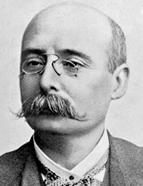

He argued that education should instil in students a belief in the nation's ability to return to moments of glory inspired by the nation's past golden periods. Although his manuals and articles in the Positivismo magazine subordinated the importance of individual actors, in the development of history, to the capacity of the people to influence the destiny of societies, he was keen on celebrating names and moments that made up the history of Portugal, since he believed that history was also drama and that it was useful to build up convictions about the present. On 8 July 1897, he took part in the IV Centenary of the Discovery of the Maritime Route to India at the Lisbon Geographical Society, contributing the text Influência dos descobrimentos portuguezes na História da Civilização [Influence of the Portuguese Discoveries on the History of Civilisation] . On 21 June 1909, in his speech praising the Marquis Sá da Bandeira, he stressed the sacred character of the Portugal Room of the Lisbon Geographical Society, where he considered the nation's past glories to be on display. In 1910, he was part of the executive committee celebrating the centenary of Alexandre Herculano.
With regard to his historiographical thinking, he wrote in Compêndio de História Universal that the choice of historical sources had to comply with preconditions that the facts had to fulfil. They had to be linked to a "race" (yellow, black or white) that had generated historical civilisations, i.e. peoples who, "constituted as a nation, had achieved significant civilisation." The race that created the most civilized peoples was white and the people in question had to belong to one of three "historical peoples": Chamites, Semites or Indo-Europeans. The first were associated with Ancient Egypt, the second with Near Eastern societies and the third with European, American and Asian civilisations (specifically Hindus, Romans, Celts, Germanic Slavs and Italiots [which were divided into Latins and Umbro-Samnites] that were considered civilised and related to the peoples of the current day (Compêndio…, 1885, pp.14-15). The concept of civilisation referred to the cultural, political, economic and technological characteristics of a given society or era, but also to its development in comparison with the most civilised society: Europe in the Belle Époque. The concepts of race, people and nation were mingled and signified a sharing of physical and mental characteristics, habits and popular culture among members of the same nation or race.
This work is financed by national funds through FCT - Foundation for Science and Technology, I.P, in the scope of the projects UIDB/04311/2020 and UIDP/04311/2020.
